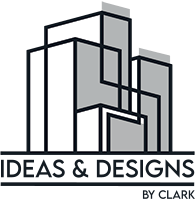Painting a car in the garage and painting a room in your home are two very different things. If you’re going to be painting something, you’re going to need more than just a paint roller and some paint. That’s why getting your car painted by a professional can be so expensive.
The process is complicated and requires some ability, but it doesn’t mean that you can’t master how to paint your car and give the vehicle a new look. Below is a step-by-step guide on painting a car yourself.
Take some time to gather your supplies
Allow plans for this project in your schedule. Painting might take somewhere from many days to several weekends, so locating a garage or shed (or something protected from the weather) is critical. Just make sure to get the location and time right before you begin gathering your supplies.
About one gallon of primer, three gallons of clear coat, plus two to three gallons of topcoat are required for a small or medium-sized car. About a half gallon of primer, topcoat (3 to 4 gallons), and clear coat lacquer (3 to 4 gallons) are needed for larger vehicles. A lot more paint than what you’ll need—and even specialists will use less—but having too much is better than having too little.
Find the color code on the compliance plate of your car if you wish to match the actual color. An auto-paint shop can also do it.
Prepare the Groundwork
Set up your workspace after you’ve gathered your supplies. Keep your workspace spotless, to begin with. Clean the floors and ensure you have enough room to operate in a shed or garage. Obstacles will make the task more difficult.
If you’re painting outside, be sure to hose down the place first to remove any dust. Also, avoid painting directly under any trees or other structures. When the paint is still wet, a droplet of contaminant might destroy the finish. After that, wash the vehicle to remove any dirt, grease, or other road filth accumulated on the exterior.
Strip It Down
You’re ready to go to work now that your work area is clean and you have an extensive collection of painting supplies. To remove the top coat, clear coat, or base coat, you will begin by sanding in spiral motions, starting at the bottom.
It is best to sand the entire vehicle back to bare metal to provide a pristine surface for the fresh primary coat to adhere to. Because of the time constraints, you should try to achieve the smoothest and most flat surface possible.
Get Prepared for Prime Time
Priming is as simple as mixing primer with thinners and masking off the sections you don’t want to be painted. Make sure you read all the instructions before getting started.
Paint Your Masterpiece
You’re now ready to get started with your painting project. The suggested ratios for mixing paint with thinners are found in the paint guidelines. The same spraying method you employed to apply to prime will finish the final coat.
Conclusion
You can paint your automobile for less money and more satisfaction if you put in the time and effort to learn how to do it.
